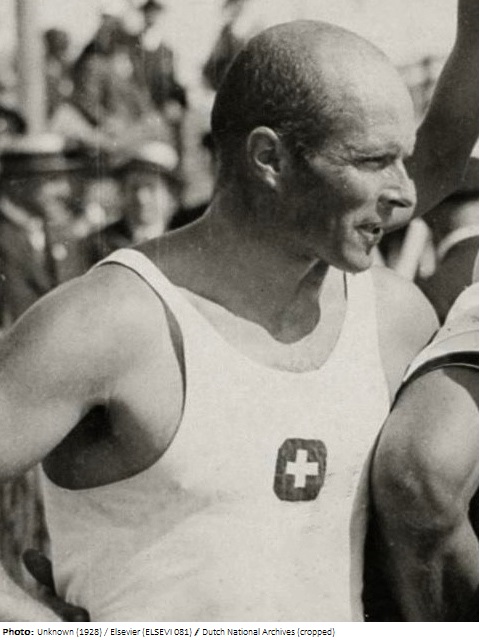Hans Schöchlin

Biographical information
| Roles | Competed in Olympic Games • Non-starter |
|---|---|
| Sex | Male |
| Full name | Hans Wilhelm•Schöchlin |
| Used name | Hans•Schöchlin |
| Other names | Hans Guillermo Schoechlin Römer |
| Born | 6 March 1893 in Santiago, Santiago Metropolitan (CHI) |
| Died | 3 June 1978 (aged 85 years 2 months 28 days) in Biel/Bienne, Bern (SUI) |
| Affiliations | Seeclub Biel, Biel/Bienne (SUI) |
| NOC |  Switzerland Switzerland |
| Medals | OG |
| Gold | 1 |
| Silver | 0 |
| Bronze | 0 |
| Total | 1 |
Biography
Hans Schöchlin’s parents emigrated to South America in 1888, where their children were born. After the early death of the father, the mother returned to Switzerland with the children. Hans studied architecture at the Zürich ETH and continued his studies at the Technical University in Karlsruhe and in München. After graduating in Karlsruhe, he worked as an architect for four years after graduation.
Schöchlin won the gold medal in the coxed pairs with his brother Karl and 13-year-old cox Hans Bourquin at the 1928 Amsterdam Olympics. Both brothers also won the 1922 Europeans in the double sculls. They then moved to the coxed eights, placing second at the 1923 and 1924 Europeans, and winning the title in 1925. In the next two years they moved to the coxed fours and won silver medals at the 1926 and 1927 Europeans. In 1930 and 1931, they won another two silvers with the coxless fours. In 1932, Hans became a member of the Swiss Olympic Committee.
As a writer, Hans took part in the 1936 Olympics in the mixed literature event of the arts competition with the work Geist und Sport (Mind and Sports), a small pamphlet that was written as a philosophic novel. It included reflections on the sport in general and some biographical details of his own sports career. In 1944 he attended the “Congress of Sports Psychology” in Lausanne.
During the two world wars, Schöchlin was deployed to the border guard and completed his military career as an infantry captain. As early as 1920, he was hired as a teacher of drawing classes at the Bau- und Kunstgewerbeschule des Kantonalen Technikums (Building and Arts and Crafts School of the Cantonal Technical College). For more than 12 years, he also taught art history, with an emphasis on decorative and applied arts. In 1932, he was appointed director of the Cantonal Technical School. After the war, he founded a woodworking school as a new department, retiring in 1958.
From 1928 to 1948, Schöchlin was a member of the Biel City Council, including several years as its president. In this capacity, and as president of the development association, he supported the construction of the Magglingen sports center. As an architect, he was also a member of the committee for the architectural competition from which Werner Schindler and Edy Knupfer emerged as the winners. The design of the “Swiss Federal Sports and Gymnastics Training Centre”, shown based on plans and a large model at the Olympic architecture competition in London, won the silver medal.
Schöchlin was also a source of ideas and president of the building commission for the renovation of Biel’s old town and president of the tourist office. For his merits, the city of Biel awarded him the cultural prize in 1967.
Results
| Games | Discipline (Sport) / Event | NOC / Team | Pos | Medal | As | |
|---|---|---|---|---|---|---|
| 1924 Summer Olympics | Rowing |  SUI SUI |
Hans Schöchlin | |||
| Eights, Men (Olympic) | Switzerland | |||||
| 1928 Summer Olympics | Rowing |  SUI SUI |
Hans Schöchlin | |||
| Coxed Pairs, Men (Olympic) | Switzerland | 1 | Gold | |||
| 1936 Summer Olympics | Art Competitions |  SUI SUI |
Hans Schöchlin | |||
| Literature, Lyric Works, Open (Olympic) |
Olympic family relations
- Brother of Karl Schöchlin